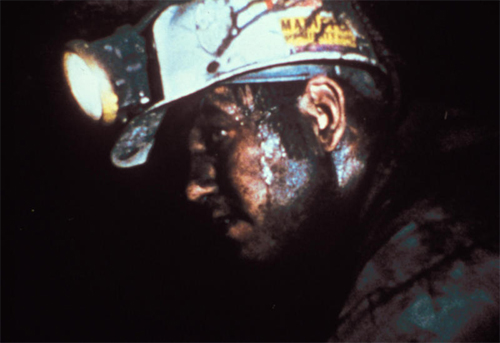
HARLAN COUNTY USA
(director: Barbara Kopple; cinematographers: Kevin Keating/Hart Perry; editors: Nancy Baker/Mirra Bank/Lora Hays/ Mary Lampson; music: Hazel Dickens/Merle Travis; Runtime: 103; MPAA Rating: PG; producer: Barbara Kopple; The Criterion Collection; 1976)
“One of the better and more rousing labor strike films that calls attention to class war in America.”
Reviewed by Dennis Schwartz
One of the better and more rousing labor strike films that calls attention to class war in America, though it doesn’t offer enough analysis or balance on the issues (it sees the struggle solely through the miners’ eyes). Barbara Kopple’s (“Wild Man Blues”/”My Generation”/ “American Dream”) earnest liberal conscience straightforward cinema verite Oscar-winning documentary (using actual footage of the events supplemented by interviews with the strike participants, who felt the filmmaker was on their side and gave her access to their meetings and private conversations) is emotionally gripping and sides with the David miners over the Goliath mine owners, which is an easy call considering the miners are grossly underpaid and work in dangerous conditions that are ignored by the bosses. Ms. Kopple turned her cameras in 1972 on Harlan County, Ky, and caught the bitter conflict over the 13-month coal miners’ strike that took place there between Brookside mine workers (the Brookside Mine’s parent company is the Duke Power Company-they are owned by big oil) and the Bituminous Coal Operators Association (BCOA) during 1973 and 1974, as the miners fought for the right to join the United Mine Workers and were assisted by their loyal long-suffering wives in organizing rallies and offering solidarity for the cause. The documentary was initially intended to be about the 1972 campaign by Arnold Miller and Miners For Democracy to unseat UMWA president Tony Boyle (accused of being in bed with the mine owners), in the aftermath of Joseph Yablonski’s mob-like murder in 1970–the rival of Boyle; but when the Harlan County strike began the filmmaker made the murder secondary to the strike. The dirt-poor coal miners (their shacks were lacking running water and black lung disease was rampant though not acknowledged by the owners as caused by their work) in eastern Kentucky were striking for essentials such as a basic living wage and basic medical benefits. Their struggle turned violent with gunfire as the hired thugs of the owners tried to intimidate the workers and the state troopers were used to keep the road open for scabs. After a young miner is killed by the owner’s hired man, the miners got a contract with a raise as the federal government put pressure on the owners to settle. Though the contract was ratified, many felt it was a sellout because it curtailed local strikes. After the “victorious” strikers return to the mines, only three months later the national coal contract expires and 120,000 striking miners nationwide continue the UMW battle started in Harlan County.
The film does a good job chronicling the plight of the miners and telling their personal stories in a moving way, and the meaningful catchy coal mining songs add to the emotional impact of the historical event. Hazel Dickens’s folk song lyrics of ‘United we stand, divided we fall’ and Florence Reece’s lyrics of ‘Which side are you on?’ give one the full-flavor of the miners’ mood and the union fervor sweeping the mining community in the black mountains of Appalachia.
REVIEWED ON 9/3/2008 GRADE: B+
© ALL RIGHTS RESERVED DENNIS SCHWARTZ